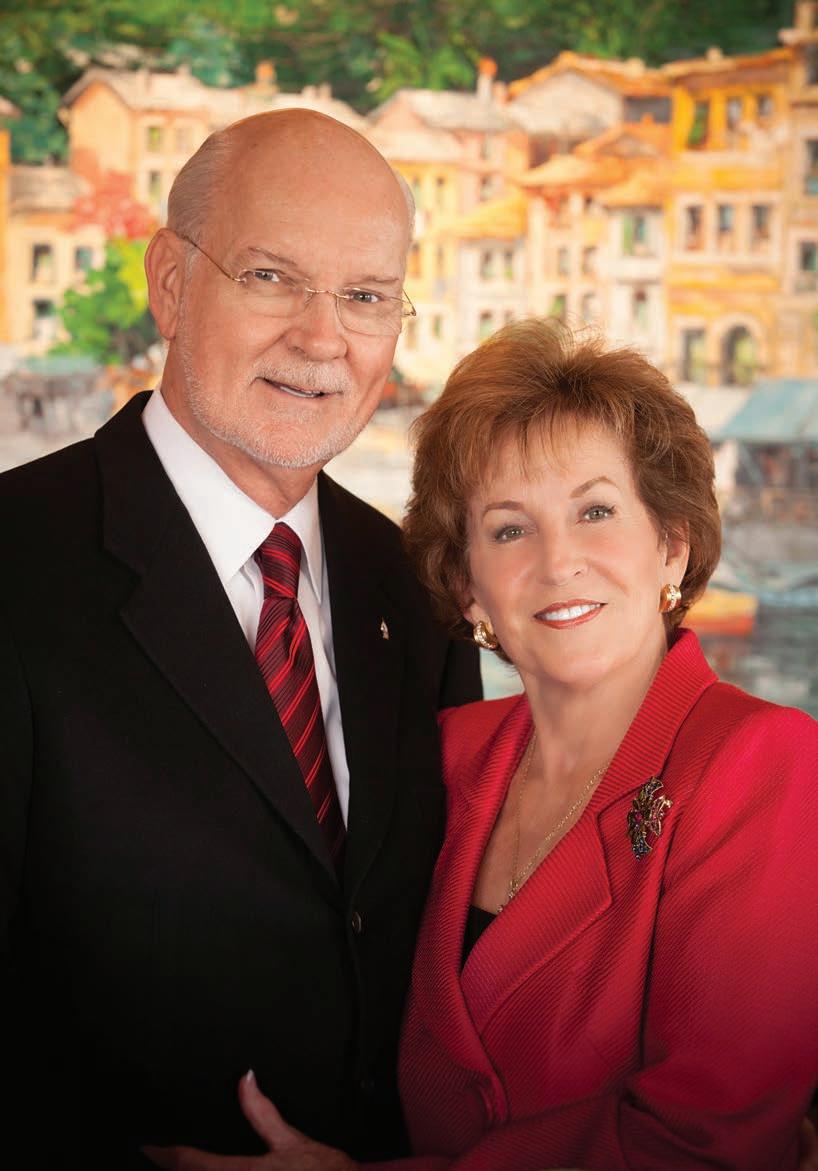
4 minute read
BEND THE KNEE
ADr. Thomas Bernasek is seen here performing a total knee replacement using the VELYS Robotic-Assisted Solution. The VELYS system is much smaller than previous designs, it contains everything a surgeon needs to complete the procedure, and it can provide real-time feedback on the implant.
Robotics has played an integral role in knee replacement surgery for more than a decade. These sophisticated devices aid in the precision of the operation, improve patient outcomes, and reduce post-operative pain.
However, they also can be cumbersome, costly, and complex, requiring company representatives to be on hand to assist in their use. In addition, the equipment can occupy a good bit of space in an operating room. But like many aspects of medical technology, robotic tools are becoming more effi cient and compact as they evolve.
Such is the case for the VELYS Robotic-Assisted Solution for total knee replacement, the latest device orthopaedic surgeons at Tampa General Hospital are using to improve knee replacement procedures for their patients.
Dr. Thomas Bernasek is a board-certifi ed orthopaedic surgeon, a founding member of the Florida Orthopaedic Institute, and TGH director of arthroplasty. He performs between 600 and 700 joint replacements a year and has nothing but praise for the VELYS Robotic-Assisted Solution.
“Some of the issues with prior designs were that they were large, bulky, and much more expensive,” Bernasek said. “Because of its much smaller footprint, [the VELYS] allows one to attach it to the side of the bed. The surgeon can walk around it on either side of the knee. It also gives us real-time information about the implant for knee replacement.”
Everything needed to perform the procedure is contained within the device, including a sterile screen the surgeon can use in place of a separate CT scan—and another person to operate it.

The VELYS RoboticAssisted Solution can place the implant on the knee and assess its stability and range of motion, allowing surgeons to make adjustments as necessary to create the best fi t and balance possible for patients. This method also reduces the risk of postoperative blood loss.
ADVANCES 55AAThe knee is surrounded by ligaments and soft tissue, Bernasek explained. During a total knee replacement, one of the main objectives is to make sure the knee is in as natural of a position as possible with regard to the ligaments around it. That’s what the VELYS Robotic-Assisted Solution does so well. “Robotics allow us to assess the stability of the knee before cutting the bone,” he said. “Basically, the computer places the implant on the knee [and] checks the stability and the range of motion with the implant in place. It can tell you if it’s a little tight here, a little loose there, so you can make adjustments to get the ideal range of motion and stability of the knee. We do all the planning beforehand, log it into the robot, and it basically makes the cuts in the appropriate plane. We [then] put on the implant and assess. It’s astonishing how effective the information is.” All that precision makes for a better, more comfortable fi t for the patient—and a fascinating step forward for surgeons, Bernasek said. “It moves us much closer to achieving perfect placement and balance of the knee.” One of the other benefi ts of the VELYS Robotic-Assisted Solution is that it can be used to perform surgery on almost anyone who needs a knee replacement, Bernasek explained. While there are some pa-

BY 2026, WE EXPECT THAT OVER HALF OF TOTAL JOINT REPLACEMENTS OF THE HIP AND KNEE WILL BE DONE AS OUTPATIENT PROCEDURES. COVID-19 DRAMATICALLY ACCELERATED THE TRANSITION TO OUTPATIENT REPLACEMENT. WE PROBABLY GOT CLOSE TO IT IN 2022 . tients with huge, thick muscles and those with very stiff or extremely scarred knees who may not be ideal candidates, he added, the majority of those who need a replacement are likely to do well. Surgeons at TGH began using the VELYS Robotic-Assisted Solution in July 2022, and the hospital is the fi rst facility in the region to offer it. “In an era when we are doing everything that can be done to accelerate patient recuperation and improve outcomes, this is one additional feature,” Bernasek said. The traditional (non-robotic) method of knee replacement requires the use of long rods inserted through the canal of the femur bone to judge alignment. This disrupts the marrow cavity, pushing blood elements into the bloodstream, creating a hole in the femur, and causing additional post-operative bleeding. With the VELYS method, alignment does not require a rod, thereby preventing blood loss. Less bleeding and more rapid recovery also mean more procedures can be done on an outpatient basis. “By 2026, we expect that over half of total joint replacements of the hip and knee will be done as outpatient procedures,” Bernasek said. “COVID-19 dramatically accelerated the transition to outpatient replacement. We probably got close to it in 2022.”
” — DR. THOMAS BERNASEK









